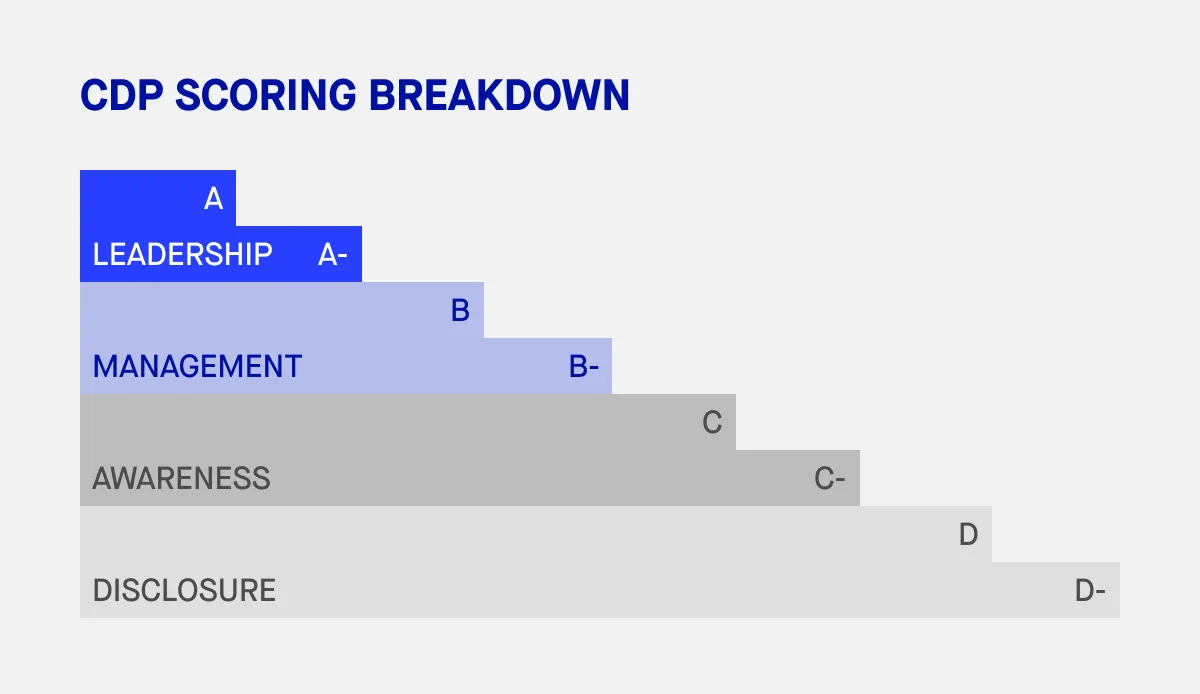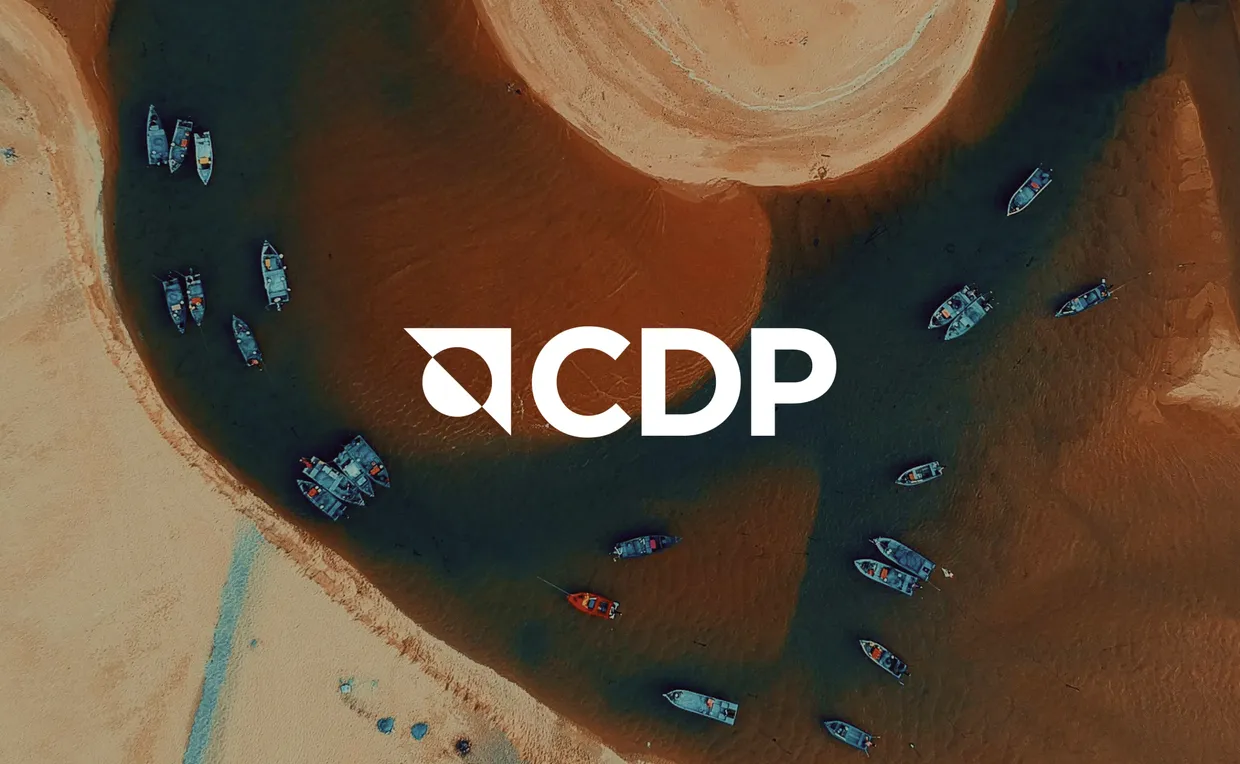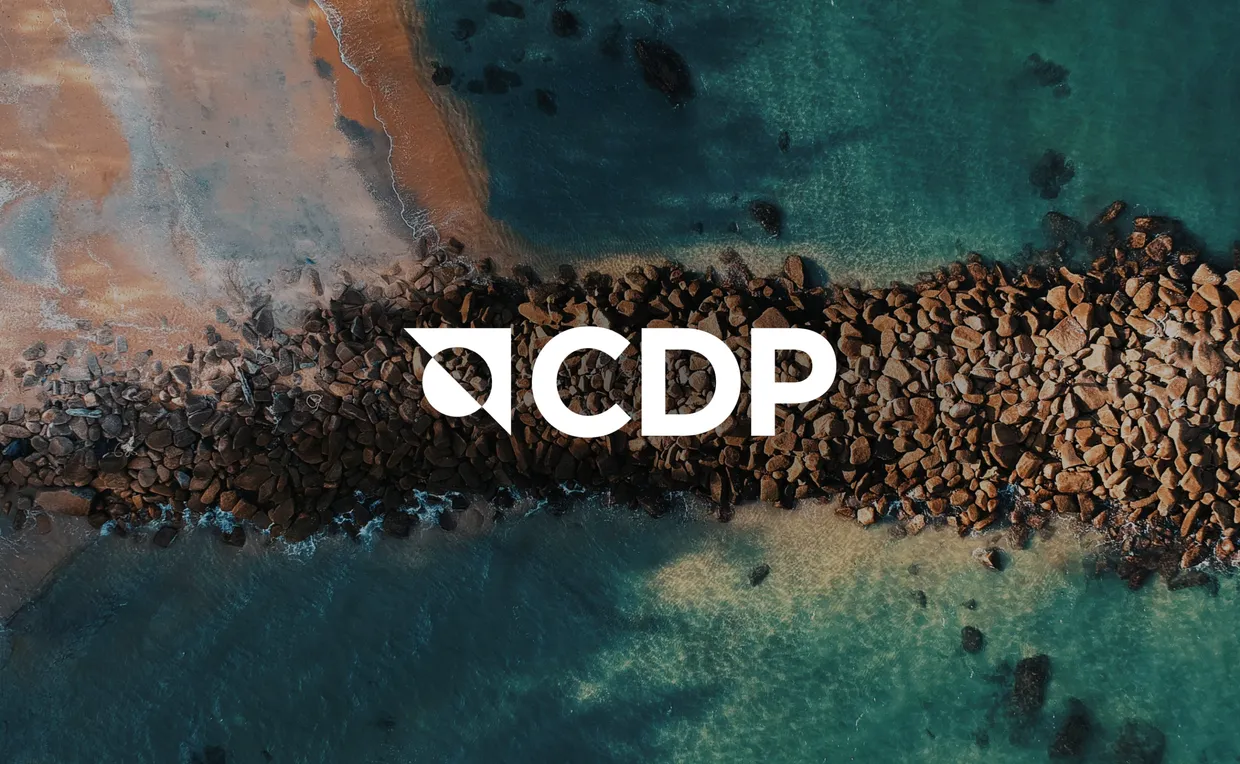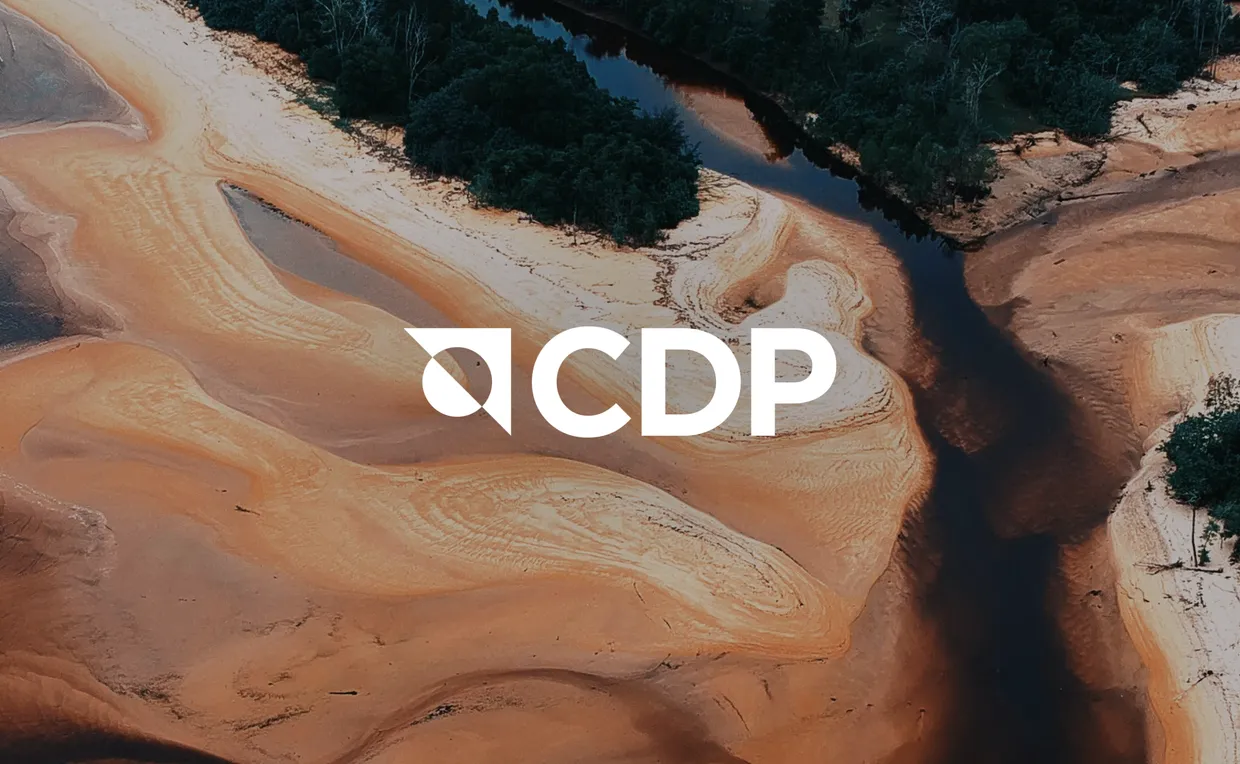Introduction to the Carbon Disclosure Project
The Carbon Disclosure Project (CDP) is an international not-for-profit charity that runs the world’s largest environmental disclosure system. Founded in 2000, the CDP aims to encourage companies to voluntarily disclose their environmental impact, focusing on four key areas: climate change, deforestation, water security, and environmental transparency. By providing a structured framework through detailed questionnaires, the CDP enables organizations to disclose their environmental information to stakeholders effectively. This transparency not only demonstrates a company’s commitment to environmental sustainability but also builds trust with investors, customers, and other stakeholders. By disclosing data through the CDP, companies can showcase their efforts in reducing their carbon footprint and contribute to a more sustainable future.
How does the CDP scoring system work?
The CDP uses a rigorous scoring system intended to evaluate a company’s environmental impact, primarily focusing on the measures organizations take to manage climate change, water security, and deforestation.
Companies that have disclosed their environmental data to the CDP are assessed based on key areas such as strategy, governance, performance, and transparency. Some organizations disclose their environmental information to CDP in response to an investor request.
The CDP’s letter-based grading scale (from A to F) helps investors, consumers, and other stakeholders quickly gauge how well companies are addressing these critical environmental issues through their reports.
The main categories evaluated include:
Governance and strategy: How effectively the company incorporates sustainability into its overall corporate strategy and governance structure.
Disclosures: The transparency of the company’s environmental data, covering emissions, water use, deforestation, forests, and other critical impacts, while meeting certain requirements as per CDP’s scoring methodology. The importance of ecosystem services in the context of biodiversity loss cannot be overstated, as it directly impacts economic and social foundations.
Targets and performance: The organization’s sustainability goals and progress toward achieving them, with a critical focus on ghg emissions, reflecting the practice of carbon disclosure ratings.
Verification and data quality: The accuracy and reliability of the reported data.
Once companies submit their responses to CDP’s detailed questionnaires, the CDP team scores them based on these categories. The higher the score, the better the company is at integrating sustainability into its operations and providing transparent, verifiable data.
What are the benefits of making the A-list?
Achieving a place on the CDP A-List is a major achievement for any company, demonstrating their progress and commitment to achieving sustainability goals. Organizations on the A-List are recognized for integrating earth positive decisions within their business models to prioritize sustainability and transparency in their climate responses. The CDP process helps motivate companies to disclose their environmental data, thereby strengthening transparency and accountability in sustainable practices. Reserved for organizations that are truly leading in environmental performance, the A-List is a recognition of exceptional environmental leadership. But what exactly does making the A-List mean, and how can it benefit a business?
Key benefits of earning a spot on the CDP A-List:
Enhanced brand reputation: Companies on the A-List are viewed as sustainability leaders, demonstrating their commitment to a more sustainable future, which boosts their reputation in the eyes of customers, partners, and investors. This recognition can translate into customer loyalty, as many consumers are now looking to buy from brands that prioritize the environment.
Attracting investment: Investors are increasingly prioritizing sustainability in their decision-making process. A top-tier CDP score can signal to investors that a company is effectively managing environmental risks and opportunities with the support provided for their environmental disclosure processes, making it a safer and more attractive investment.
Competitive advantage: Being part of the CDP A-List places companies ahead of their peers. In many industries, sustainability has become a key differentiator, and companies with strong CDP scores may gain an advantage in securing contracts, partnerships, and market share.
Access to sustainability-driven business opportunities: With growing corporate focus on sustainability, companies in the A-List may be better positioned to win tenders, secure contracts, and enter into partnerships with organizations that prioritize environmental performance.
What are the different CDP levels of environmental stewardship?
The CDP provides a clear, progressive scoring scale, where organizations are scored based on their environmental transparency and performance, ranging from A (leadership) to F (failure). Each level represents a different stage of environmental engagement and stewardship, with D- being the lowest score, indicating minimal corporate commitment to sustainability.
The Intergovernmental Panel on Climate Change (IPCC) and the Intergovernmental Science-Policy Platform on Biodiversity and Ecosystem Services (IPBES) play a crucial role in linking biodiversity with greenhouse gas emissions and resilience against climate threats.

The key CDP scoring levels include:
A (Leadership): These companies are acknowledged as leaders in environmental performance, achieving the highest score in the CDP scoring system. They have integrated sustainability deeply into their business model, set ambitious targets, and demonstrated exceptional progress in addressing climate change and other environmental issues.
B (Management): Companies in this category are managing their environmental impacts effectively, although they may not yet be leaders in the field. They are actively working towards sustainability but still have room to grow.
C (Awareness): These companies are aware of their environmental impacts and have taken some initial steps to address them. However, they might not yet have a comprehensive strategy in place or measurable targets.
D (Disclosure): At this level, companies are making some effort to disclose environmental data, but they may not have concrete strategies or significant actions to reduce their environmental footprint.
F (Failure): Companies with an F score have failed to meet the minimum requirements for environmental action or disclosure. This might mean that the company did not participate in CDP reporting or submitted inaccurate or incomplete data. The evolving scoring criteria have resulted in a lower score than in previous years for some organizations.
These levels help companies gauge where they stand on their sustainability journey and provide a clear roadmap for improvement. By improving their environmental performance, businesses can gradually rise through the ranks, starting from D and striving toward A.
What is the CDP reporting timeline?
The CDP operates on a structured annual timeline, ensuring that companies report their environmental data on an annual basis in a timely and consistent manner. Further details regarding upcoming deadlines and specifics for submitting questionnaires will be provided soon on CDP’s website. The process includes several key milestones that businesses must follow to ensure they meet the CDP’s reporting standards.
Key stages of the CDP reporting timeline:
- Questionnaire release: The CDP releases its annual cdp questionnaires in the spring (typically April or May), which companies must complete to disclose their climate-related data. These questionnaires are extensive and require companies to provide detailed information about their environmental practices.
- Submission deadline: Companies must submit their completed response by mid-summer (usually July). During this time, businesses must ensure that all the data is accurate, complete, and verified.
- Assessment and scoring: After the submission deadline, the CDP assesses the responses and scores companies based on their environmental performance. This process can take several months as the CDP team analyzes the data and verifies its accuracy.
- Results publication: CDP publishes the results in the fall (typically October or November). This is when companies, investors, and other stakeholders can see the scores and evaluate environmental performance.
- Ongoing engagement: Companies are encouraged to update their environmental strategies and submit their responses every year to maintain or improve their CDP scores.
By adhering to this timeline, companies ensure that they stay on track with their sustainability reporting and can make any necessary adjustments to improve their environmental impact.
How can businesses prepare for CDP reporting?
Preparing for CDP reporting is a comprehensive process that requires careful planning, data collection, and strategy development. Here are some steps companies can take to prepare effectively:
Set clear sustainability goals: Establishing measurable, time-bound science-based targets aligned with the latest climate science is crucial. These goals should focus on reducing carbon emissions, improving water use, and minimizing deforestation. Additionally, companies should assess and disclose their sourcing practices related to palm oil, as it plays a significant role in deforestation and greenhouse gas emissions.
Implement robust data tracking systems: Accurate and reliable data is the backbone of CDP reporting. Companies must track emissions, energy consumption, water usage, waste generation, and other environmental metrics consistently.
Engage stakeholders: Involving key stakeholders from across the organization—such as sustainability officers, supply chain managers, and internal auditors—helps ensure they understand the company’s environmental impact and performance, leading to a comprehensive and accurate reporting process. Self-selected companies that voluntarily choose to disclose their sustainability practices through the CDP demonstrate a proactive approach in managing their environmental reporting and visibility.
Ensure transparency: It’s essential to provide transparent and verified data. Transparency builds trust with investors, consumers, and other stakeholders, and it plays a critical role in achieving a high CDP score.
For more detailed guidance on how to prepare for CDP reporting, Sweep has another article that dives deeper into these steps.
Improving CDP Scoring
Improving CDP scoring requires a dedicated commitment to environmental sustainability and transparency. Companies can enhance their CDP scores by disclosing comprehensive information about their environmental impacts, risks, and opportunities. Implementing effective environmental management practices, such as reducing greenhouse gas emissions and improving water security, is crucial. The CDP offers guidance and resources to help companies improve their environmental sustainability and transparency. Achieving a high CDP score not only demonstrates leadership in environmental sustainability but also attracts investors, customers, and top talent. By continuously improving their environmental performance, companies can achieve better CDP scores and contribute to a more sustainable future.
CDP Resources
The CDP website provides a range of resources to support companies on their environmental sustainability journey. The CDP’s website offers guidance and tools on environmental reporting, supply chain management, and stakeholder engagement. Companies can access the CDP’s online response system to disclose their environmental information and utilize the available resources and guidance. Additionally, the CDP offers training and support to help companies improve their environmental sustainability and transparency. By leveraging the CDP’s resources, companies can enhance their environmental performance, reduce risks, and seize opportunities for growth and innovation. These resources are designed to help companies achieve a more sustainable future and motivate them to integrate earth-positive decisions into their business models.
Moving forward with sustainability: Key takeaways
A strong CDP score not only demonstrates a company’s commitment to environmental sustainability but also motivates companies to disclose environmental data, opening doors to investment, new business opportunities, and enhanced brand loyalty. Understanding how the CDP scoring system works, the benefits of making the A-List, the different levels of environmental stewardship, and the reporting timeline are key to successfully navigating the CDP process.
As sustainability becomes more critical for businesses worldwide, preparing for and engaging with the CDP is an essential step in ensuring long-term success in today’s eco-conscious market and achieving global goals. For additional insights on how businesses can optimize their CDP reporting, don’t forget to check out Sweep’s other article on preparing for the CDP reporting process.





_ZgacEM.webp)